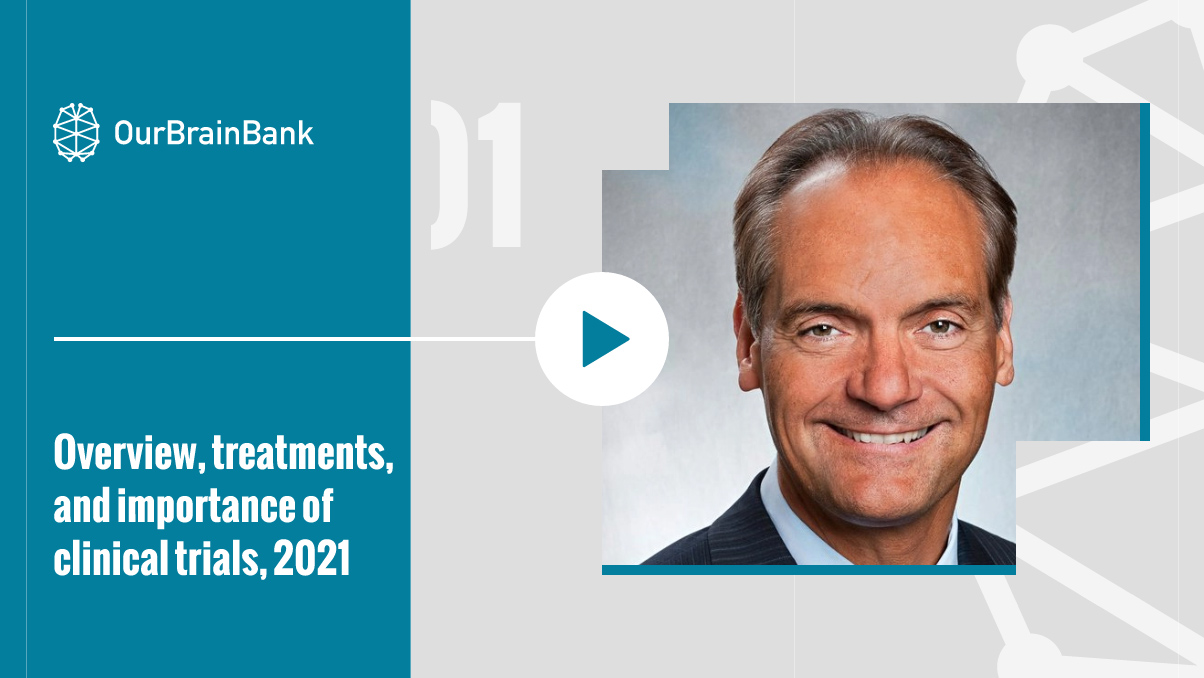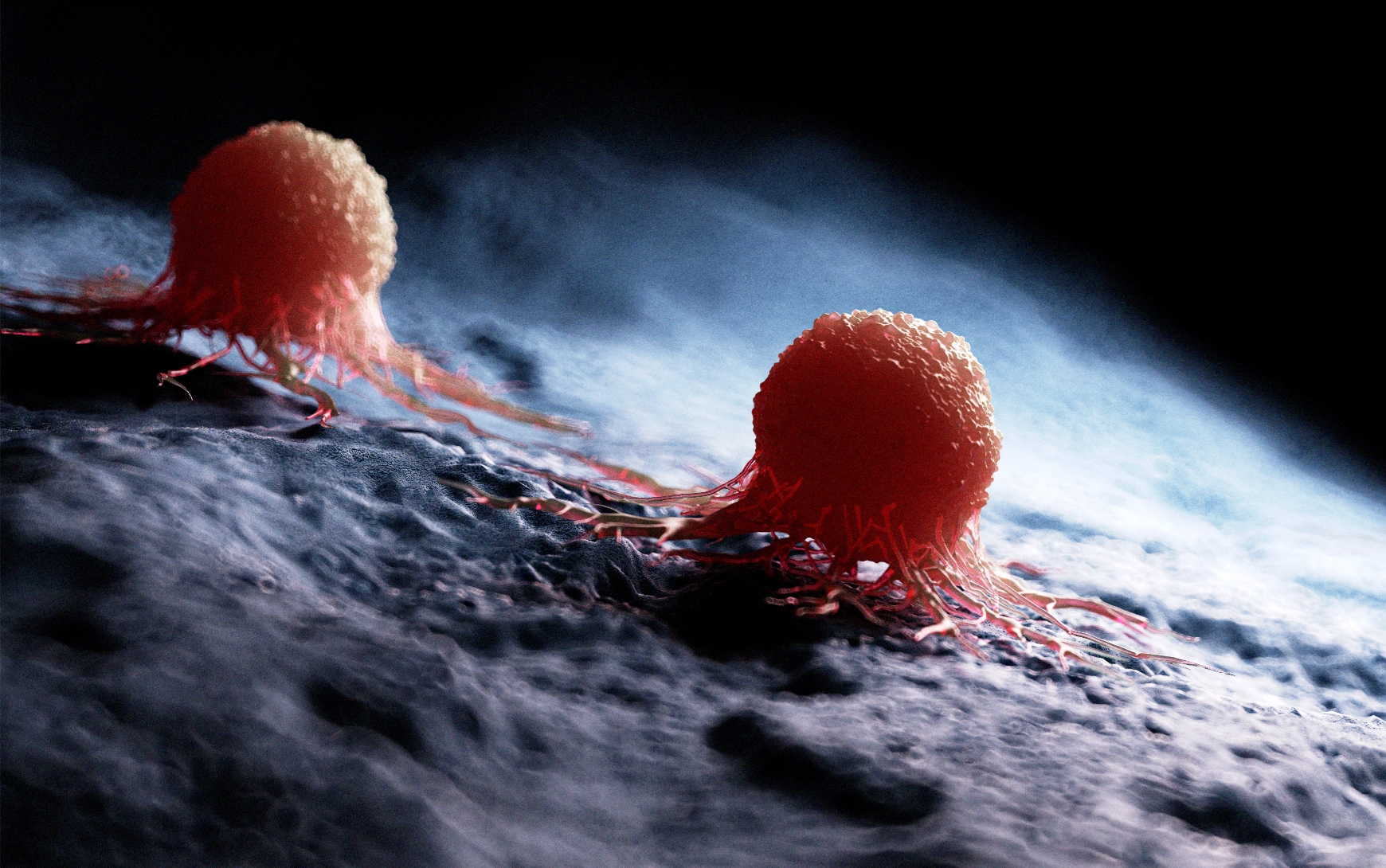Save the date: June 5, 2025 for a celebration of ALL IN MY HEAD, by Jessica Morris, Brooklyn
Join us on June 5, 2025 in Brooklyn to celebrate Jessica Morris’s memoir of living with glioblastoma ALL IN MY HEAD.


Learning about GBM and staying up to the date on the latest developments can be tricky to navigate. Learn about the basic science of GBM, latest treatments, experimental approaches and clinical trials.

Learning about GBM and staying up to the date on the latest developments can be tricky to navigate. Learn about the basic science of GBM, latest treatments, experimental approaches and clinical trials.
GBM is the most common type of adult brain tumor but is also the fastest-growing and most invasive. GBM tumors are diffuse, meaning the tumor can spread into nearby healthy tissue, making it impossible to remove the whole tumor with surgery. Another reason it is challenging to treat is that GBM tumors display a high level of heterogeneity, meaning the tumor is made up of different cell types, with different characteristics that can affect their survival or response to treatment. A treatment might shrink the tumor but leave some resistant cells behind. If any tumor cells survive treatment, they can multiply and form a more resistant tumor to therapies – this is why there are fewer treatment options for progressive or recurrent GBM.
Glial cells are important in GBM because these tumors form from abnormal glial cells. Glial cells are found in the brain and spinal cord. They play a structurally supportive role for other brain cells such as neurons (cells that send and receive signals from the brain). There are different types of glial cells, including astrocyte cells, the specific type out of which GBM develops. This is thought to occur when mutations within an astrocyte cell or an astrocyte precursor cell cause it to become malignant and grow uncontrollably, eventually resulting in a tumor composed of many cells.
Treating GBM is especially challenging because the brain is protected by the blood-brain barrier. This regulates which substances in the blood can enter the brain, in order to protect it from dangerous substances like viruses and toxins. The problem is, the barrier can also block drugs from entering the brain, complicating the task of finding new medical treatments that work.
Scientists are investigating methods to get around this. The Trojan horse approach involves attaching a drug to a molecule known to be able to pass through the blood-brain barrier. Molecular modifications of drugs can also make a drug more brain-penetrant. Experiments are also being tried with nanoparticles to deliver drugs across the blood-brain barrier, or disrupting the barrier by using ultrasound.
The function of the immune system is to detect and remove foreign or abnormal cells. However, cancer cells develop mechanisms to evade the immune system. This can be done through various methods, such as the cancer cells losing their surface antigens. Antigens are substances that can be recognized by the immune system, if a cell loses its surface antigens the immune system has no way of recognizing it.
To reverse this, scientists are investigating immunotherapy treatments designed to help the immune system detect and then combat the tumor. These approaches have proved effective against other cancers and are now being tried out on GBM. However, the presence of the blood-brain barrier and the heterogeneity of a GBM tumor remain a challenge. Another challenge is that the glioblastomas have a very immunosuppressive tumor microenvironment, rich in cells that block the antitumor activity of the immune system. No immunotherapies have been approved for GBM as of yet, though a number of clinical trials are under way.
With the advent of molecular and genetic testing, scientists have been able to classify more accurately the multiple forms of GBM tumors. Researchers have looked at the differences, known as mutations, between the DNA of tumors and healthy cells. They found that the presence of certain mutations can affect how the tumor develops. Certain mutations can also indicate how successful a certain course of treatment might be.
MGMT is a gene of a DNA repair enzyme. The promoter of the MGMT gene can be methylated or unmethylated.
In tumors where the MGMT promoter is methylated, less of the DNA repair enzyme is produced, making the tumor cells more susceptible to the chemotherapy drug temozolomide, which acts by damaging the DNA of tumor cells. In GBM tumors with unmethylated MGMT promoter, there is more DNA repair enzyme and the tumors are more resistant to chemotherapy drugs. Therefore, methylated MGMT promoter is considered a factor of prolonged survival.
Genomic sequencing of your tumor maps its genetic makeup, providing more information about its characteristics, including details about specific mutations. This provides clues as to how the tumor might react to specific treatments which can help patients get more tailored treatment. It can also help indicate what treatments will be ineffective, preventing patients from experiencing side effects from unnecessary treatments and allowing them to focus on more relevant medical approaches.
To find out more, visit the National Human Genome Research Institute website.

Surgery, radiation and chemotherapy make up the standard of care. Optune is the newest addition to the GBM standard of care in the US.
Surgery alone is not a cure but can relieve symptoms caused by a build-up of pressure within the brain and allow more time for other treatments to be tried. A tumor sample can be taken and analyzed to provide important information such as DNA mutations. In turn that can help identify and create potentially useful treatments, modeled directly on each person’s unique tumor.
GBM is one of the most challenging tumors as it invades healthy tissue, so lacks a clear boundary. The aim of surgery is to achieve a maximal safe resection, whereby as much tumor is removed without causing permanent neurological deficits.
Sometimes the surgeon will opt for an “awake” surgery. This is designed for tumors located in an area of the brain that controls important functions, such as speech or motor strength. In an awake surgery, the patient remains conscious for all or part of the procedure. That allows the surgeon to observe their responses to make sure that their function is not being compromised.
Some tumors are inoperable. The tumor may be too close to parts of the brain responsible for essential functions or difficult to reach. Sometimes there are multiple tumors making surgery impossible, or the patient has underlying health problems that makes surgery and anesthesia too risky.
Given that surgery is not a cure and always leaves behind tumor cells even when there is a gross total resection, radiation and chemotherapy are usually required as the next step in the standard of care.
The purpose of radiation is to kill the cancer cells that were not visible during surgery or those that could not be safely removed. It works by employing high energy waves to damage the DNA of the cancer cells, leading to tumor cell death. Normal cells near the tumor might also get damaged but the treatment should be focused to minimize this risk.
Radiation treatment is usually split into daily treatments (treatment fractions) that occur Monday to Friday, with rest days at the weekend. The treatment course can last around 6 weeks. Gray (Gy) is a unit to measure the total dose of radiation the patient will receive over the treatment period. GBM patients will usually receive 60 Gy of radiation split into 30 fractions.
Chemotherapy involves using drugs to kill tumor cells. In aggressive cancers such as GBM the chemotherapy will slow the return of the tumor but is unlikely to stop its growth entirely or to provide a cure.
For GBM, Temozolomide (TMZ) is the chemotherapy drug recommended as the standard of care. TMZ works by damaging the DNA of cancer cells, thereby preventing cell division. Tumors deficient in MGMT (i.e, those with methylated MGMT promoter, see above) are more sensitive to TMZ.
TMZ is usually taken in capsule form. Treatment is given in cycles – each cycle lasts 28 days and within a cycle TMZ is taken once a day over five consecutive days, with no treatment on the remaining days.
Chemotherapy treatment reduces white blood cell levels, which can increase a person’s risk of infection. Alongside this, the level of blood platelets (cells that allow blood to clot) are reduced which can lead to nose bleeds or increased bruising. Other possible side effects of TMZ include nausea, vomiting, constipation, hair loss, fatigue and headaches. If you experience side effects, speak with your doctor as they might be able to prescribe something to help.
Optune is a relatively new, non-invasive treatment for GBM produced by Novocure. It is a wearable device that creates tumor-treating fields, alternating electric fields that can interfere with cell division.
In tumors, cells divide uncontrollably and at a much faster rate than normal cells. During cell division, the chromosomes (long DNA molecules) are replicated and are pulled into each of the daughter cells, so that they each have the same amount of genetic material as a regular cell. Tumor-treating fields disrupt the process, and as a result the chromosomes are not separated correctly and the cell division slows or in some cases the cells die.
The treatment has been shown to extend survival in some GBM patients. The device can be used by GBM patients who have been newly diagnosed, following surgery and treatment with radiation and chemotherapy. The Optune device may be used in conjunction with the chemotherapy drug TMZ. The device can also be used alone if other treatment options have been exhausted.
(Novocure, the company that produces Optune, has generously supported OurBrainBank through its community outreach program.)
For more information about the device see here.

The immune system is designed to protect the body through the recognition and removal of foreign or abnormal cells, such as viruses, bacteria and cancer cells.
Cancer immunotherapy (also known as immuno-oncology) involves the development of substances that can stimulate or enhance our body’s immune response, so that it can overcome the tumor defense mechanisms and eliminate cancer cells.
There are different types of immunotherapies, as there are many components and mechanisms via which the immune system can be exploited to attack cancer cells.
Here are some types of immunotherapies:
Checkpoint Inhibitors are drugs that counteract the trick that cancer cells deploy to avoid attack by the body’s immune system cells which are known as “T cells”. T cells bind to and eliminate cancer cells. On the surface of the T cells are checkpoint proteins which act as an on/off switch. They make sure that the T cells don’t perform so strongly that they destroy healthy cells. That is where the cancer cells sneakily devise a way to deactivate the body’s immune system. They develop the ability to bind with the checkpoint proteins, sending an “off” signal to the T cells that switches them off before they can kill the cancer cell. Checkpoint inhibitor drugs are designed to prevent the cancer cells pulling off this trick – they block the tumor cells from binding with the checkpoint proteins on the T cells, and that in turn stops the cancer cells from deactivating the T cells. Once that is done, the immune system can then proceed with the job of eradicating the tumor.
Monoclonal antibodies (MABs) mimic natural antibodies but are engineered to recognize and bind to cancer cells, allowing the immune system to recognise and eliminate them.
CAR (Chimeric Antigen Receptor) T cell therapy involves T cells being taken from the patient and modified in the lab so that they can recognize a specific protein on the tumor cells. When reinjected, the CAR T-cells should then be able to recognize and destroy the tumor cells.
Cancer vaccines can be used to train the immune system to detect and eliminate cancer cells.
Immunotherapy has been approved as treatment for many types of cancers. However the use of immunotherapies to treat GBM is still in the initial stages of research, and it is not currently accepted as part of the GBM standard of care.
Viral therapy is a form of immunotherapy that involves the engineering of a virus that can infect and kill cancer cells. Scientists modify these viruses so that they cannot harm normal cells. They’ve done that with the polio virus, for instance, creating a poliovirus vaccine. The virus will invade the cancer cells and once inside they will hijack the cell’s machinery in order to replicate. This will eventually cause “cell lysis” – the cell will burst and die, releasing more viruses and tumor antigens (foreign substances). These duplicate viruses can go on to infect more cancer cells, while the tumor antigens that have been released can be detected by other immune system cells, which in turn can fire up the body to take out tumor cells itself. Other viruses such as herpes virus, adenoviruses have also been modified as potential therapies for glioblastomas.
Personalized vaccines are designed to help a person’s immune system recognize and target their tumor. One type of personalized vaccine being researched for the treatment of GBM includes dendritic cell vaccines (for example, DC Vax®-L).
Dendritic cell vaccines are made up of the person’s own dendritic cells (DCs), which are a type of immune system cell, the role of which is to find and bind to antigens (a foreign substance). Once bound to an antigen the DCs become activated. They will present the antigens on their surface and interact with other immune cells – triggering the body’s immune response.
The vaccines are made by taking DCs from the patient and introducing them to antigens drawn from the patient’s own tumor in the lab. These activated DCs are then injected back into the patient to begin an immune response.
The effectiveness of dendritic cell vaccinations is unclear as some studies have indicated extended survival while others have shown no measurable benefit. Immunotherapy for GBM has not been approved by the FDA in the US. The most common way to gain access to these treatments is through clinical trials. Some drug companies in the US offer access to their products through compassionate use programs which you should ask about through your doctor.
A clinical trial is a study of the safety and effectiveness of new drugs and treatments.
A new treatment is developed through different phases, commonly divided in phases 1, 2 and 3. A phase 1 is usually testing the best dose or frequency of a new treatment and is usually open-label (you and your doctor will know what you are getting) and there is no placebo. A phase 1 may be testing doses that may not have a significant antitumor effect or doses that ended up having too much toxicity. A phase 2 clinical trial starts when the dose of the new treatment is better defined and its main goal is to look for a signal of efficacy. It may be randomized (one is randomly assigned to either the new therapy or the standard of care treatment) or a single arm phase 2 study (all patients receive the new treatment). A phase 3 study is done when the new therapy shows some signal of efficacy in the prior phases. The phase 3 studies are often randomized and may include a placebo but most phase 3 trials for patients with glioblastoma include an active standard of care treatment for the control arm.
Clinical trials are vital in speeding up the search for new ways to treat GBM. They can also offer hope on top of the standard treatments for participants living with the disease.
Neuro-oncologist Alexis Demopoulos, who is one of OurBrainBank’s medical advisors, says that most doctors treating patients with GBM will have their own portfolio of clinical trials that they might suggest — usually the ones they think are best or that they have access to.
Alexis says it’s important to recognize that clinical trials are by definition still in development and it is not yet clear how effective they are likely to be. As a result, they are not an alternative to the standard of care; rather, they should be seen as possible additions to the standard of care.
ALEXIS SAYS.
If a trial is open to patients right at the start, at the point of diagnosis, it’s called an “upfront” clinical trial. If the clinical trial is targeted to those whose disease has come back after initial treatment, it’s known as a “recurrence” clinical trial. These are the two main entry points to taking part in a clinical trial.
In the US there is a website that serves as a repository for all clinical trials. It’s called ClinicalTrials.gov and you can search the database by condition and by the location of the trial. Brace yourself, though – the website is hard to decipher and the trial entries use a lot of medical terminology. Alexis says that given how user-unfriendly the site is, a better way to go might be to discuss clinical trial options with your neuro-oncologist who can explain it all to you.
Another critical thing to think about is how much going on a clinical trial will impact your daily life. “The location of the trial is important,” Alexis says. “Will you have to uproot your family? Will you be miserable for six months for something that doesn’t end up benefiting you? My advice is: don’t make major sacrifices. Some people can do that, but most can’t, and I don’t recommend it. If you find one nearby that’s convenient, this may be the best option.”
He adds that you may have sought a second opinion about treatment options after your diagnosis, and you might find there’s a clinical trial nearer to that neuro-oncologist. “Make a follow-up appointment and talk to them about it. That’s totally reasonable.” he says.

Genomic testing and personalized medicine
Scientific advances like genomic testing and personalized medicine offer a way forward for people with GBM.
Genomic testing can be performed on tumor tissue and is used to gain more information about a tumor, such as identifying mutations that are causing its growth. This can help your doctor understand not only how aggressive your tumor is, but how it might react to certain treatments.
Having access to this information is useful when considering different treatments because it can indicate which treatments or trials might be more or less effective in treating your specific tumor.

Genomic testing and personalized medicine
Scientific advances like genomic testing and personalized medicine offer a way forward for people with GBM.
Genomic testing can be performed on tumor tissue and is used to gain more information about a tumor, such as identifying mutations that are causing its growth. This can help your doctor understand not only how aggressive your tumor is, but how it might react to certain treatments.
Having access to this information is useful when considering different treatments because it can indicate which treatments or trials might be more or less effective in treating your specific tumor.
Join us on June 5, 2025 in Brooklyn to celebrate Jessica Morris’s memoir of living with glioblastoma ALL IN MY HEAD.
Read the letter conductor Michael Tilson Thomas posted. He’s has been open about his glioblastoma diagnosis with his many fans around the world.
Connect with others also affected by glioblastoma—give and get support, information, and resources.
Each year, Oncology Practice Management updates this comprehensive guide to sponsored patient support programs.
Join us on June 5, 2025 in Brooklyn to celebrate Jessica Morris’s memoir of living with glioblastoma ALL IN MY HEAD.
Read the letter conductor Michael Tilson Thomas posted. He’s has been open about his glioblastoma diagnosis with his many fans around the world.
Connect with others also affected by glioblastoma—give and get support, information, and resources.
Each year, Oncology Practice Management updates this comprehensive guide to sponsored patient support programs.
